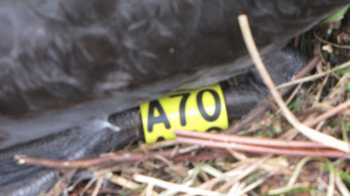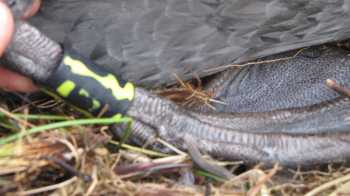The demographic study colony of Southern Giant Petrels M. giganteus on Gough Island has just entered its second year with 170 occupied nests in the Low Hump colony being staked out in the last two days. Nearly all the incubating birds identified by culmen measurements as males had badly worn colour bands after only a year. The level of wear made it difficult to read their codes and it looks likely their bands will start falling off before the third year of the study commences in 2012.

Female Southern Giant Petel: no discernable band wear after one year

Male Southern Giant Petrel: heavy band wear after one year
Photographs by John Cooper
So, does anyone have any suggestions how to mark male giant petrels so that a long-term study will not require them to be handled every year to read their bands, with many requiring regular rebanding?
Suggestions sent to me at
Click here to read an earlier news item on Gough's giant petrels.
John Cooper, ACAP Information Officer, 21 September 2011

 English
English  Français
Français  Español
Español